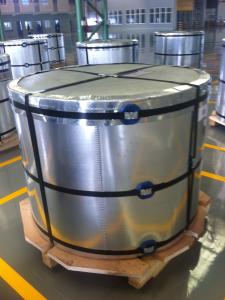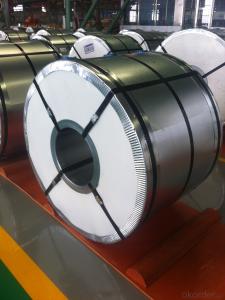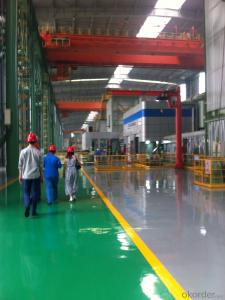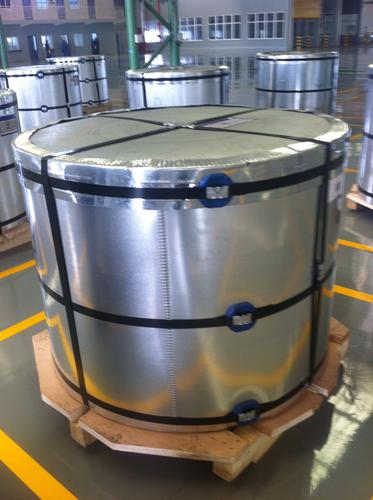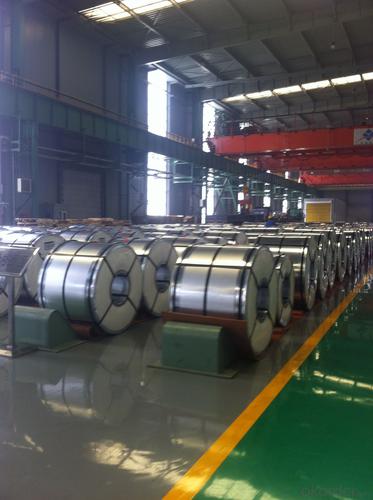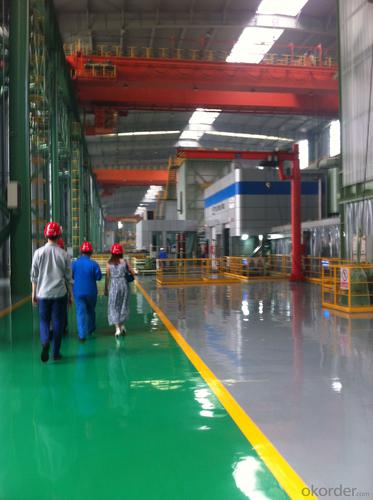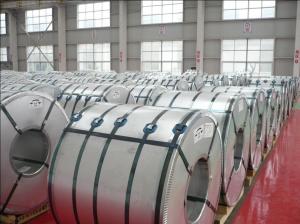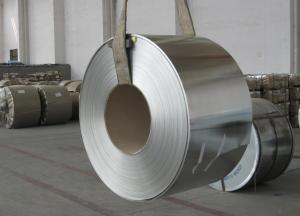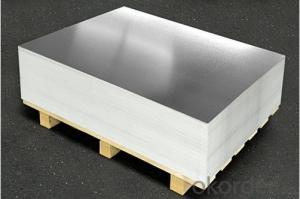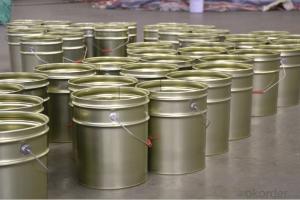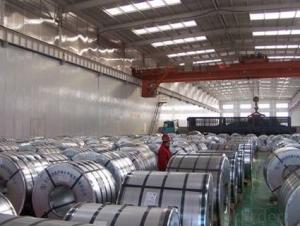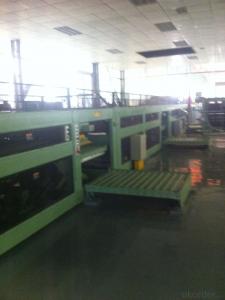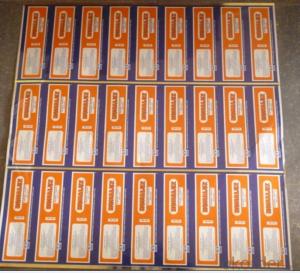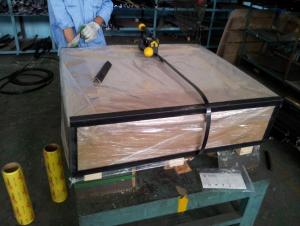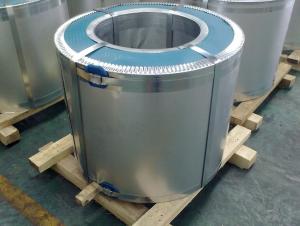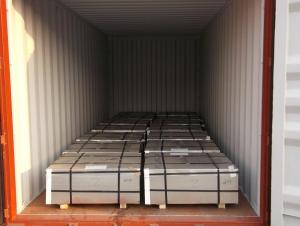Prime Quality Tinplate Sheets for 0.21mm SPCC
- Loading Port:
- Tianjin
- Payment Terms:
- TT OR LC
- Min Order Qty:
- 25 m.t.
- Supply Capability:
- 5000 m.t./month
OKorder Service Pledge
OKorder Financial Service
You Might Also Like
1.Structure Description
Electrolytic Tinplate Sheets is one of the metal packing materials, which is widely used for making painting cans ,chemical package cans , electrical cable ,battery and metal printing etc.
2. Main Features
Steady and high quality
Fast shipment
Good experience for export work
For the surface, Plate uniform in thickness,uniform and smooth tin coating, without flaws,rusts,scratch,wave,nick of tin coating etc.
Price competitive
3.Images
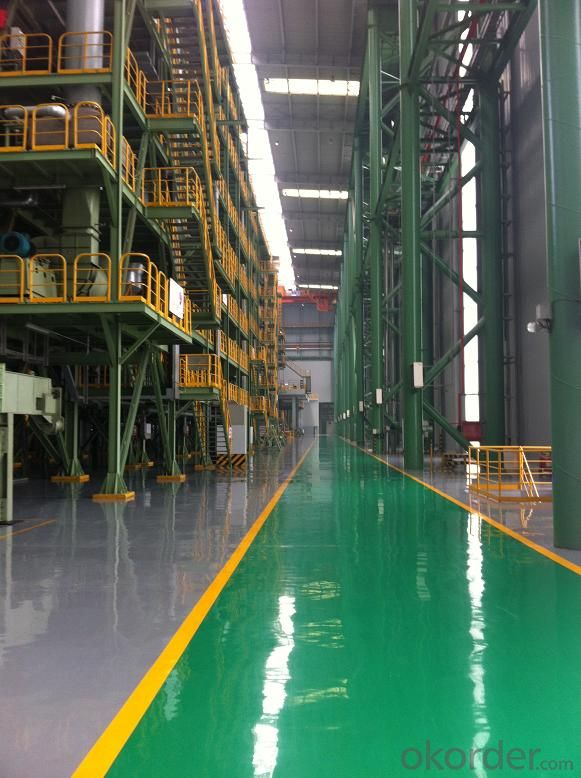
4. Specification
Standard : GB2520-2000 ,JIS G3303
Steel type : SPCC,MR
Coating : 2.8/2.8
Surface: Bright, Stone ,
Thickness:0.18
Width :600MM~1000MM
Temper : T1~T5,DR8
Package: tinplate wrapped completely with an inner cover of plastic or waterproof papers with vorners protected with metal angels.
5.FAQ
A. What is the package of tinplate? (Referred as below)
For sheets, thin plastic film + rust-proof paper + metallic cover + metallic angles+ steel band strips + fumigated wooden pallet.
For coil, thin plastic film + rust proof paper + metallic cover + steel band strips + fumigated wooden pallet
B. The surface of tinplate could you supply?
Stone finish, Bright finish, Matte finish, Silver finish
C. What quantity is the minimum order of tinplate?
Usually, the minimum quantity is 25MT. For special case, consult with us.
D. Can it make to be BA or CA for annealing?
Yes, both can do with.
E.Do you have other tin coating?
Yes, we can do with E2.8/2.8, E5.6/5.6,D2.8/5.6 etc.
- Q: How does tinplate handle exposure to UV radiation?
- Tinplate does not handle exposure to UV radiation well, as it is prone to degradation and oxidation when exposed to sunlight for prolonged periods.
- Q: What are the main applications of tinplate in the gardening industry?
- Tinplate is commonly used in the gardening industry for various applications such as plant pots, seed trays, watering cans, and garden tools. The use of tinplate ensures durability, corrosion resistance, and ease of maintenance, making it an ideal choice for these gardening essentials. Additionally, tinplate can also be utilized for packaging purposes, such as cans for storing fertilizers, pesticides, and other gardening products.
- Q: What are the main applications of tinplate in the textile industry?
- Tinplate is commonly used in the textile industry for applications such as canning and packaging of textile products. It provides a protective and decorative coating that enhances the visual appeal and durability of the packaging materials. Additionally, tinplate is also utilized for manufacturing sewing machine needles and other textile machinery components, as it offers excellent corrosion resistance and strength properties.
- Q: How long does tinplate last?
- Tinplate can last for several decades, or even longer, depending on various factors such as the quality of the tin coating, the environment it is exposed to, and the maintenance practices followed.
- Q: Can tinplate be welded or soldered?
- Yes, tinplate can be welded or soldered.
- Q: What are the main applications of tinplate in the music industry?
- Tinplate is primarily used in the music industry for the production of cans for storing and preserving musical instruments, such as drums and cymbals. It provides a durable, corrosion-resistant and lightweight solution for packaging and transporting these instruments, ensuring their protection and longevity. Additionally, tinplate is also used for manufacturing components of musical instruments, such as reeds for woodwind instruments or small parts for stringed instruments, due to its malleability and ability to create intricate shapes.
- Q: How does tinplate packaging contribute to product convenience?
- Tinplate packaging contributes to product convenience by providing a durable and lightweight solution that is easy to handle and transport. It effectively protects the contents from external elements such as moisture, light, and air, ensuring the product's quality and longevity. Additionally, tinplate packaging often comes with easy-to-open features like pull tabs or twist-off caps, making it effortless for consumers to access the product. Its versatility allows for various shapes and sizes, making it suitable for a wide range of products across different industries.
- Q: Can tinplate be used for agricultural applications?
- Yes, tinplate can be used for agricultural applications. It is commonly used for the packaging of agricultural products such as canned food, seeds, and agricultural chemicals. Tinplate offers protection against moisture, pests, and contamination, making it suitable for preserving and transporting agricultural goods. Additionally, its durability and resistance to corrosion make it a reliable choice for various agricultural uses.
- Q: How does tinplate handle extreme weather conditions?
- Tinplate is highly resistant to extreme weather conditions due to its corrosion-resistant properties. It can withstand both high temperatures and extreme cold without warping, cracking, or deteriorating. Additionally, its protective coating prevents rusting, making it an ideal material for withstanding harsh weather, such as heavy rain, snow, or intense sunlight.
- Q: What are the disadvantages of using tinplate in packaging?
- One disadvantage of using tinplate in packaging is that it can be more expensive compared to alternative packaging materials such as plastic or cardboard. Additionally, tinplate is prone to corrosion, which can compromise the integrity of the packaging and lead to product spoilage. It is also heavier than other materials, which can increase shipping costs and carbon footprint. Finally, tinplate is not as easily recyclable as some other packaging materials, contributing to environmental concerns.
Send your message to us
Prime Quality Tinplate Sheets for 0.21mm SPCC
- Loading Port:
- Tianjin
- Payment Terms:
- TT OR LC
- Min Order Qty:
- 25 m.t.
- Supply Capability:
- 5000 m.t./month
OKorder Service Pledge
OKorder Financial Service
Similar products
Hot products
Hot Searches
Related keywords
